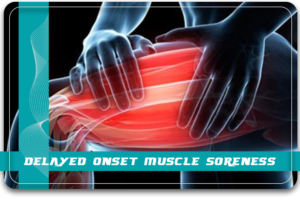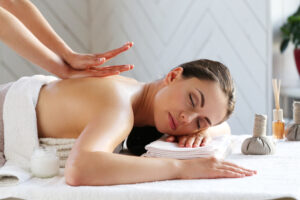Introduction
For many young fitness enthusiasts, the exhilaration of exercise often comes with a side effect: muscle pain. In this blog post, we will explore the reasons behind muscle pain after exercising and how to deal with it. Understanding this common occurrence can help you make the most of your workouts without being discouraged by the temporary discomfort. Purchase medications from tabpill.co as it is legitimate and operates within the legal and ethical guidelines.
The Science Behind Muscle Pain
Explaining The Role Of Muscles:
Muscles are like the engines of our body, and when we exercise, we put them to work. This section will briefly delve into how muscles function during physical activity.
Microscopic Tears And Inflammation:
So, here’s the deal with why muscles hurt after working out. When we exercise, especially if it’s intense or involves new movements, tiny damage happens in our muscles. It’s like they go through a little wear and tear. This triggers our body to kick in with an inflammatory response, a natural process to fix and adapt.
Ever heard of DOMS? It stands for Delayed Onset Muscle Soreness and usually shows up 1 to 2 days after a tough workout. It brings tenderness, stiffness, and some swelling. The soreness is because of those tiny tears, especially when our muscles stretch out.
But here’s the cool part as our body fixes these little tears, it makes our muscles even stronger for the next time. So, feeling sore is like a sign that our muscles are leveling up!
Remember, it’s all part of our body getting better. Take breaks, drink water, and don’t rush things. Your muscles are just adapting and growing, and that’s a good thing!
Types of Muscle Pain
Immediate vs. Delayed Onset Muscle Soreness (DOMS):

When it comes to muscle soreness, there are two types. First, there’s the immediate soreness, which happens right after you finish exercising. It’s like a quick ache, often caused by lactic acid. Then, there’s the Delayed Onset Muscle Soreness (DOMS), and this one kicks in about a day or two later. DOMS is when your muscles feel stiff and tender, and it happens because tiny muscle fibers get a bit damaged during certain exercises.
The cool thing to know is that the soreness goes away fast, but DOMS might stick around a bit. It’s all part of your body healing and getting stronger. So, when you plan your workouts, knowing about these soreness phases helps you figure out what to expect and how to take care of your muscles. Keep it up, and you’ll be a fitness pro!
Common Areas Of Pain:
Highlighting the typical areas where young individuals may experience muscle pain, such as legs, arms, and the core.
After exercising, it’s common for muscles in your legs, like the Front (Quadriceps) and Back (Hamstrings), to feel a bit sore. The arms, including the muscles you use to lift and push, might also feel tender. Don’t forget about your core those tummy and lower back muscles can join the soreness party, especially if you’ve been working them out.
Knowing which parts might feel a little achy helps you understand that it’s normal, and you can use stretches or gentle movements to ease the discomfort. It’s like a sign that your muscles are getting stronger!
There are several recommended treatments to ease muscle soreness following exercise:
Massage:

Consider seeking the expertise of a qualified sports massage therapist or physiotherapist. Massages, by enhancing Blood Flow to the injured area, can facilitate healing and provide Pain Relief.
Heat Therapy:

Engaging in a warm bath or applying heat pads is another method to stimulate Blood Circulation in the affected muscles. However, it’s important to note that heat therapy generally offers temporary relief from symptoms.
Cold Therapy:

Cold packs or immersing the affected area in cold water can effectively reduce inflammation and swelling in the muscles. This makes cold therapy a valuable longer-term treatment for muscle injuries.
Light Exercise:

Keeping the muscles active through light exercise can contribute to pain reduction. It’s crucial to maintain a low intensity and avoid movements that strain the injured muscles. Examples of suitable light exercises include walking and gentle stretching.
Pain Medication:
Taking over-the-counter meds like ibuprofen (NSAIDs) can help ease muscle pain and swelling, but it is super important to stick to the right amount. If you ever feel unsure, talk to a healthcare pro they are there to help!
By doing these things, you can handle Muscle Soreness like a champ and make your recovery after workouts way smoother. Also, Pain O Soma 500 is a muscle relaxant that helps your nerves chill out, making your Muscle Pain feel more relaxed. Just remember, always check with a doctor before trying any new meds. Stay strong and take care!
Tips For Minimizing Muscle Pain
Warm-Up And Cool Down:
Explain the importance of warming up before exercise and cooling down afterward to prepare the muscles for activity and aid in their recovery.
Hydration And Nutrition:
Discussing how proper hydration and nutrition contribute to muscle health, helping to prevent excessive soreness.
Gradual Progression:
Encouraging a gradual increase in the intensity and duration of workouts to give muscles time to adapt and reduce the risk of soreness.
Recovery Techniques
Rest And Sleep:
Stressing the importance of allowing the body to rest and recover, including the role of adequate sleep in muscle repair.
Stretching And Foam Rolling:
Introducing simple stretching exercises and the use of foam rollers to alleviate muscle tightness and soreness. Pain O Soma 350 is a medication that contains the active ingredient Carisoprodol, which is a muscle relaxant. It is commonly prescribed to alleviate muscle pain and discomfort associated with conditions such as sprains, strains, or Muscle Pain Injuries,
Overview
Feeling sore after a workout is normal, and it’s a sign that your body is getting stronger! Understanding why it happens and knowing the different kinds of muscle pain can help you bounce back faster. By learning some cool science stuff about how your muscles work, you will be better prepared to keep up with your active lifestyle.
Don’t worry if you are a bit sore it means you are making progress! And guess what? There are tricks, like gentle stretches and taking it easy sometimes, that can help you feel better in no time. So keep moving, stay positive, and enjoy your fitness journey!




